“If people knew how hard I worked to get my mastery, it wouldn’t seem so wonderful at all.”
~ Michelangelo
This essay will define how and what I learned to master introductory guitar techniques as well as advanced level guitar and performance techniques through formal and informal learning commensurate with first-rate college level education as exemplified in courses at Oberlin College, The Berklee College of Music, and The New School For Jazz and Contemporary Music. I have been playing guitar for 47 years (39 years professionally) and I have a deep knowledge of my instrument.
References to harmony, theory, composition and improvisation are occasionally made to underscore how I learned guitar and performance techniques. However, other essays address “Harmony and Theory” and “Composition and Structured Improvisation”. It is not my objective to address those subjects in this essay.
Some of the ways in which I learned guitar and performance techniques include: enculturation, formal instruction from private teachers and schools, rote learning, dialogues with musicians, imitation through observed behavior, self-education cross referenced tangentially from other interests like film and dance, multimedia learning that incorporates both visual and audio components, the informal learning of interaction with other musicians, on the job learning, and combinations of the above.
Technical mastery is an essential component of virtuosic performance, but musical proficiency is not predicated solely on technique. Although it is imperative for the evolving guitarist to develop a synchronicity between the movements of the right and left hands, musical expression of emotion is essential. As Pablo Casals said, “Every note must sing” (Blum 1980:2).
With my first guitar teacher, an experienced professional musician, Vincent Pattaglia, I learned correct posture, how to hold a guitar, how to hold a pick between my thumb and index finger, how to perform from the elbow without an anchored wrist, how to maintain consistent time with my right hand, and to tap one foot along with a metronome while alternate picking. Regarding left hand technique, I learned thumb placement and vertical placement of the fingers for a solid tone, as well as weekly diatonic and chromatic “Finger Gymnastics” to develop dexterity, finger independence and synchronicity between both hands. Using Alfred’s Basic Guitar Method: books 1-2, I learned to read standard notation, how to tune a guitar, first position playing, scales, sequences, keys, folk songs, beginner chords, etudes, duets and melodies with chords, and major and minor scales. I learned to perform all of the studies in accompaniment with Pattaglia. Furthermore, by ear I learned movie theme songs such as “Around The World In Eighty Days”, “Raindrops Keep Falling On My Head”, and “The Entertainer”. In time, as I learned a song I found other notes that I liked better, so I began to improvise, compose and perform these for others. The following year I attended a six-week summer guitar workshop where I learned to strum, sing, and perform songs with others.
As a teen I studied weekly with retired professional guitarist, Joe Yurko, with whom I learned Alfred’s Basic Guitar Method: books 3-4 and A Modern Method For The Guitar by William Levitt. Learning to read in various positions developed my guitar and performance techniques with arpeggios, 7th chords, accompaniment techniques, moveable chord forms, interval studies, simple lead sheets, and strum patterns. I used a metronome to develop my technique by raising the tempo incrementally to perform at the fastest tempo where I could perform perfectly. At this time I practiced guitar techniques 6 to 8 hours a day. Additionally, I drew a diagram of the neck, notated the names of the notes on each fret for each string, and I learned the notes by saying and performing them.
Furthermore, I learned to perform the bottleneck Blues technique of Duane Allman, Jimmy Page, and George Harrison, using alternate tunings of open E and open G.
I learned guitar techniques from records, by ear, with friends, and from songbooks by The Beatles, Led Zeppelin, Rolling Stones, Rush, Joe Pass and Wes Montgomery. With Improvising Rock Guitar by Pat Thrall, I learned to perform major and minor pentatonic scales, blues scales and box patterns. The transcribed solos in tablature with expressive techniques such as whole step, half step, quarter step and unison bends, hammer ons, pull offs, slides, and choked notes strengthened my technique as I performed along with the demonstration record. I applied these techniques to perform many songs including “Sweet Home Alabama”, “Sunshine Of Your Love”, and “Stairway To Heaven”. I built up strength by performing barre chords at every fret, and moving up the neck chromatically.
Additionally, with The Wes Montgomery Jazz Guitar Method, I learned to imitate Montgomery’s right thumb technique, which fingers to use for octaves and double octaves, harmonizations of chord tones and non-chord tones, and I performed Montgomery’s songs “Bumpin’”, “Round Midnight”, “The Shadow Of Your Smile”, “Tequila”, and “The Thumb”.
Furthermore, with The Joe Pass Guitar Method, I learned parent forms and related scale fingerings, interval sequences, patterns and arpeggios. Learning Pass’ guitar techniques enabled me to learn and perform his etudes and his versions of “Blues For Alican” and “Misty”. Jack Petersen’s Jazz Styles & Analysis: Guitar included a transcription of Pat Metheny’s solo on “Bright Size Life” which I learned to perform note for note (Petersen 1979:53).
I learned the guitar techniques and performed the songs and solos of “Jazz/Rock” guitarists Jeff Beck (“Freeway Jam”, “Cause We’ve Ended As Lovers”, “Led Boots”, “Come Dancing”, “Goodbye Pork Pie Hat”, “Blue Wind”), Larry Carlton (“Kid Charlemagne”, “Don’t Take Me Alive”, “Spiral”, “Room 335”, “Mulberry St.”), Lee Ritenour (“Captain Fingers” and “Dolphin Dreams”) and Jay Graydon (“Peg”). Through books, recordings, and transcriptions I learned their chord/scale combinations; chromaticism; complicated ostinatos; extreme register jumps; variations on tone production through pick angles and changes in attack; and rhythm guitar adaptations of keyboard parts using two and three-note voicings with palm muting techniques (White 1981). From listening to the records and studying the scores of John McLaughlin’s Mahavishnu Orchestra I learned to perform many of the band’s songs through learning uncommon altered 7th chords, arpeggios, exotic scales, odd and compound meters (McLaughlin 1976).
I learned guitar techniques from books, music magazines, and recordings found at libraries. The Hunterdon County Library carried 5 years of back issues of Guitar Player [i] and Downbeat Magazines. I studied all interviews and monthly lesson columns. I read most of the books in the library’s music section and listened to most of the records in their collection. From these sources I learned about guitar techniques, performance history and professional performance gear.
Various technologies have helped me to learn and improve my guitar and performance techniques. For example, by slowing music to half speed on a Sony reel-to-reel tape deck, I learned to hear and perform professional techniques (slides, bends, hammer-ons, pull-offs) slowly and then increased the tempo as my performance abilities improved. I learned and performed fast songs (“Johnny B. Goode”, “Alabama Getaway”, “I’m The One”), guitar solos (“Whole Lotta Love, “Dazed and Confused”, “Stairway To Heaven”, “Crossroads”, “Eruption”), Travis Picking (“Dust In The Wind”) and arpeggiated accompaniments (“Babe I’m Gonna Leave You”). This is also how I learned to transcribe music – guitar parts, vocalists, pianists, horn players, orchestral sections, etc. – which I continue to do to this day. Additionally, I made sound-on-sound recordings with the Sony deck by recording a backing track of guitar chords or arpeggios, bouncing it to track two and then overdubbing a solo. I learned to keep time, add expressions to maintain excitement, and maintain distance between parts to avoid muddiness. Like Jimi Hendrix, I recorded my solos and flipped the reel for the deck to play back in reverse. I also composed solos from the end to the beginning, recorded it, flipped the tape and played it back, thus fine-tuning my technique and expressions so the playback sounded natural. Furthermore, using Jamey Abersold’s play-along records I learned to perform jazz songs at all tempos with a professional rhythm section. In the late 1980’s I used the loop function on CD players, and since 2003 I use a computer program called “Transcribe!”.[ii]
At 17 I began private studies with professional jazz guitarist Harry Leahy (1935-1990), a Grammy award winning guitarist and professor at William Patterson University who helped me learn to develop my guitar and performance techniques. For example, using a metronome at 50 bpm I learned to subdivide the beat by performing 1-12 notes/beat. This developed rhythmic diversity in melodic phrasing. I learned major, minor, symmetrical scale fingerings, 7th arpeggios and inversions, two octave modal scale fingerings, modal chord progressions, seventh chords on five different string groups, tetrachordal formulas, jazz bass lines on strings 5&6 with the melody of a standard on strings 1&2 (performed with a hybrid technique of pick with fingers), and many jazz standards and bebop tunes such as “All the Things You Are”, “Donna Lee” and “Au Privave”. I learned to perform in all keys following the cycle of 5ths.
I adapted composer/ethnomusicologist Bela Bartok’s Microcosmos for the guitar.
Furthermore, I developed my guitar and performance techniques from the Charlie Parker Omnibook and violin etude books by Wohlfahrt and Kreutzer. I also went to Leahy’s concerts and learned, through observed behavior, guitar techniques such as cascading harp harmonics and double-stop contrary motion. I honed my guitar techniques when I performed jazz standards at dinner clubs and weekly concerts at elementary schools with the high school jazz ensemble.
Through on the job training I honed guitar and performance techniques. Beginning at 17, I performed rock, blues and jazz at professional venues with musicians ten years older and more experienced than me. We performed songs by Hendrix, Eric Clapton, Neil Young, The Allman Brothers, Led Zeppelin, The Rolling Stones and Rush. Performing songs for extended periods of time with lengthy improvisations strengthened my technique and performance abilities. Odd meter songs like “Money” and “Whipping Post” taught me to pick and phrase differently. I learned to set up and maintain my guitars, amplifiers, and effects by performing at clubs, colleges and school dances.
I continued to learn guitar and performance techniques through observed behavior and dialogues with professional musicians. In high school I learned by watching professional rock bands at dances. In college I went to Manhattan jazz and blues clubs where I met guitarists and learned techniques, song choices, music vocabulary, and professional manner from various guitarists.
From Joe Pass I learned how he fit chords with walking bass lines and fast single note bebop phrases.
From Tal Farlow I learned about extended intros of close voiced chord melodies, natural and artificial harmonics and his percussive “bongo” technique (Rochinski 1994:87).
From Herb Ellis I learned jazz/blues phrasing and double-stop solos. From Barney Kessel I learned Charlie Christian-style vocabulary and block chord movements.
From Pat Metheny I learned about contemporary melodic phrasing, slurs, and performing through the range of the instrument.
In addition to the professional on the job training and individual study described above, formal studies strengthened my guitar and performance techniques. From 1984-85 I attended Musicians Institute (MI) in Los Angeles and graduated with honors (SD_1.MI_diploma). I practiced technique and performed music 16 hours a day while learning from highly skilled professionals. At M.I. I learned guitar and performance techniques in a variety of ways: one-on-one instruction, small improv groups, classrooms, lectures, video tutorials, and four semesters of music video computer ear training tutorials (SD_1.MI_diploma/records). I learned to use a heavy, inflexible pick to develop maximum speed and accuracy. In a variety of “Live Performance Workshops” I honed my performance techniques by learning and performing many styles of music including Jazz, Big Band, Blues, R&B, Brazilian music, Funk, Country and Rock. Teachers gave constructive criticism on how to better perform crescendos, tags, odd meters, hemiola rhythms, and reharmonization techniques.
Additionally, I learned a variety of genre specific guitar and performance techniques from instructors. At M.I. each instructor taught specific styles, expressions, techniques, and vocabulary. From Joe Pass I learned where and when to use common chord voicings; performing a song in all twelve keys; standard jazz licks; bebop phrases; clichés; quoting; and melodic/motivic resources (not chord scales) as basis for soloing. In addition, I continued to learn Charlie Parker bop motifs, blues and rhythm changes, chord and melodic techniques, drop 2 and 3 voicings, walking bass lines, chord soloing techniques, and hybrid picking. Consequently, these guitar techniques strengthened my performance abilities with vocalists.
From Joe Diorio I learned bebop gestures, added note chords, chord melody, and modern intervallic designs derived from major, minor, chromatic and symmetrical scales. With Frank Gambale I learned sweep picking as applied to arpeggios, scales, and Michael Brecker’s sax phrasing.
From Howard Roberts I learned scale and arpeggio fingerings, uncommon jazz chord voicings. From Robben Ford I learned to perform Miles Davis’ modern harmony, modern jazz/rock soloing, and comping.
With Ron Eschete I learned Johnny Smith-style chord melody and soloing.
From Keith Wyatt I learned intros, outros, and soloing techniques to perform traditional Blues and rock styles. Using the “Scale of Dynamic Markings” in Music Notation, I learned to produce variations in dynamics using fast tremolo picking (Read 1979:250).
From Tommy Tedesco I learned how to interpret lead sheets using style specific techniques and accurate performance of complex rhythmic material. Tedesco brought me to Barbara Streisand’s Evergreen Studio to observe Jerry Goldsmith conduct an orchestra. As a result of learning these rigorous guitar and performance techniques, I can handle myself professionally in the studio and any performance situation. In essence, for over 35 years I’ve used these guitar and performance techniques in hundreds of concerts, recording sessions and Broadway shows that I’ve performed in such as “Annie” and “Little Shop of Horrors”.[iii]
These advancements in my guitar and performance techniques fostered employment in the music business. From 1985-86, I was the music director and guitarist with R&B vocalist Johnny Stewart, brother of recording artist Billy Stewart. I assembled the band, wrote out charts and arrangements, and organized rehearsals. I learned and performed the classic R&B guitar parts of artists like James Brown, Wilson Pickett, Marvin Gaye, Billy Stewart and Stevie Wonder. This music requires very specific techniques, such as bending, choking, right hand muting, staccato and legato playing. We performed in Los Angeles and spent a month in Las Vegas where we performed at numerous hotels on any given day (SD_2.1985_LasVegas).
In 1987 I moved to Philadelphia to study with Dennis Sandole, former teacher of John Coltrane, Pat Martino, Joe Diorio, Harry Leahy, and others (SD_4.Dennis_Sandole_Bio). I studied weekly with Sandole for 13 years (SD_ 3.recomendations_music). After five years with Sandole he told me I was his most advanced student. Mastery of uncommon intervallic combinations using single notes, double stops, triple stops and jagged rhythms helped me develop a finely honed synchronicity between my right and left hands. Additionally, as I developed my sight singing and eartraining skills through A New Approach To Sightsinging, Modus Novus, and singing sequential intervallic studies on major, minor, symmetrical, exotic and synthetic scales, my performance techniques improved as I was able to more quickly interact with other musicians and perform instantaneously what I heard in my head. Besides the weekly lessons, I also learned technique development from Sandole’s book Guitar Lore.
Furthermore, I improved my guitar and performance techniques and ability to interact rhythmically with drummers by performing weekly with master drummer Edgar Bateman (Charlie Parker, Miles Davis, Herbie Hancock and Eric Dolphy). I also learned the techniques that drummers study, such as accents, cross rhythms and polyrhythmic superimposition from Louis Bellson’s Modern Reading Text in 4/4, Bob Moses’ Drum Wisdom, and a DVD by Jack DeJohnette.
As a result of the above learning, I developed my own unique guitar techniques to meet new performance demands. I created a hybrid right hand guitar technique utilizing a pick and fingers approach as I synthesized melodies, chords and solos to perform solo jazz guitar concerts.
I learned and performed in concert, dozens of songs with this technique, focusing on the music of John Coltrane, Miles Davis and Wayne Shorter. Additionally, I learned and performed the techniques and music of blues guitarists Robert Johnson and Son House.
I learned traditional Brasilian guitar techniques while on tour there for a month in 1992. Upon returning to the USA, I honed the guitar and performance techniques idiosyncratic to the vocabulary of guitarists A.C. Jobim, Joao Gilberto, Luiz Bonfa, Joao Bosco, and Caetano Velosa (SD_5.1992_Brasil.listings). In 1994 I developed a repertoire of solo guitar and group arrangements of jazz standards, bossa nova tunes, rock tunes and original compositions for the purpose of establishing a career in jazz performance. For two years I had a weekly, three-set gig with a guitar, acoustic bass, and drum jazz trio where I improved my guitar and performance techniques (SD_6-7._Philly). I arranged songs with specific harmonies and bass lines, and devised soloing strategies for each song to develop contrast in a set. I learned to incorporate idiomatic introductions and endings, a variety of tempos and feels, single note, double stops, octave, and chord soloing, solo introductions (rubato and in tempo), trading fours and eights, comping for bass solos, on site reharmonization considerations, modulation, and transposition for variation of color and dramatic development.
My guitar and performance techniques developed breadth as I learned to perform with other instrumentalists in the free jazz idiom. In 1995 I began performing with free-jazz alto saxophonist Jimmy Stewart and his band, which was together for 30 years. In order to perform with this band my guitar technique improved by learning intricate sax melodies, techniques to perform spontaneously, wide interval single note lines, two octave polytonal arpeggios, multi-octave and twelve-tone scales.
At this time I studied many of Andrew White’s Coltrane transcriptions. Learning them on the guitar improved my guitar and performance techniques on fast songs (“Blues To You”); slow tempo songs with very fast phrases of unusual lengths (“Naima”); and solos with wide interval leaps and unusual triadic and tetrachordal combinations (“Jupiter”, “Leo”, “Mars”, “Impressions”).
As I focused my energy on original compositions my guitar and performance techniques developed exponentially. Since 1996 I have focused on composing and recording original compositions, for which I have released twelve CDs (SD_9-31.cd_reviews1-23).[iv] Each CD features original compositions, which require specific guitar and performance techniques such as extreme string skipping to execute wide intervals, 12-tone spatial sets that extend through the range of the guitar, holding fingers doublestop solos, double stops in contrary motion, oblique motion using chords, and left hand expansion/contraction of chord inversions. Additionally, I learned extended techniques from The Technique Of Orchestration (Kennan 1990:52-74).
Furthermore, from rehearsing, performing and recording with master musicians Ornette Coleman, David Murray, Cecil Taylor, and Evan Parker, I learned which techniques really worked. I also learn technique from guitar instructional and concert DVD’s.[v]
My guitar and performance techniques continue to develop through incorporating ideas from master composers. During the past 20 years I learned the music of Duke Ellington, Thelonious Monk, Wayne Shorter, Elliot Carter, Igor Stravinsky, Debussy and other 20th Century classical composers, incorporating twelve tone chords and scales, spatial sets, all interval hexachords, and tempo modulation into my guitar and performance techniques. Additionally, I teach beginner and advanced guitar and performance techniques as I have amassed a compendium of studies that strengthen a variety of genre specific techniques.
Concert previews (SD_32-43.cp.1-12) and concert listings, programs and posters (SD_44-63.concertlpp.1-20) substantiate the work I’ve done to develop guitar and performance techniques. In the past 15 years I have done numerous band tours throughout the USA, Canada, three tours of Japan, northern India, Denmark, Sweden, Germany, France, and Switzerland.[vi] On each tour I experienced significant breakthroughs with regard to guitar and performance technique. For example, performing in 25 different cities on three Japan tours brought me in touch with how to use extreme contrasts of dynamic ranges, unique juxtapositions of expressions, and silence. I learned to perform the guitar with Butoh dancers and poets. I learned to use a chrome slide for percussive effects, variations on intonation, Doppler effects and ultra-high melodies. More information about my technique may be found in articles and interviews at: www.eisenbeil.com/press.html and supporting documents (SD_64-76.articles1-13).
I have dedicated my life to learning the guitar and performance techniques of many musical genres including jazz, bebop, classic rock, blues, acoustic bottle neck blues, funk, soul, Broadway, country, 20th Century classical, folk, jazz/rock, fusion, avant garde jazz, free improvisation, East Indian and Asian music. Through studying and assimilating the techniques of a broad eclectic scope of master musicians, in conjunction with a variety of performance aesthetics, I have developed a flawless, effortless guitar and performance technique in order to express my unique personal sound.
END NOTES
[i] This monthly magazine featured in-depth interviews and graduated music lessons with accomplished guitarists (with specific subjects taught) such as: Howard Roberts (Jazz Improvisation), Barney Kessel (Jazz Guitar), Jimmy Stewart (Techniques of Various Guitarists), Tommy Todesco (Hollywood Studio Sessions), Jerry Hahn (Techniques and Exercises), Michael Lorimer (Classical guitar), Stefan Grossman (Ragtime Guitar), Arnie Berle (Fretboard Basics), Larry Coryell (Contemporary Guitar), Tom Darter (Music Theory) and Chuck Rainey (Modern Bass Guitar). An interview in Guitar Player magazine with John McLaughlin helped me a lot. He suggested using a metronome to develop one’s time and precision between the hands. He suggested Tremelo picking – metered and unmetered alternate picking – as a way to develop synchronization.
[ii] Transcribe software, www.seventhstring.com, accessed Dec.30, 2011.
[iii] See Alan Scott’s recommendation (SD_3.recomendations_music), program (3.1 LSoH_show)
[iv] Discography – https://www.eisenbeil.com/disc.html
[v] Guitar Technique videography list
[vi] A performance list (1980-2011) is at: www.eisenbeil.com/live.html.
VIDEOGRAPHY
VHS Recordings
Allan Holdsworth. VHS. Directed by Don Mock (Miami, FL: REH Video, 1992).
John Scofield – On Improvisation. VHS. Directed by N.A. (New York: DCI, 1984).
DVD Recordings
Danny Gatton – Telemaster! . DVD. Directed by Arlen Roth. 1990; New York, NY: Hot Licks, 2005.
George Benson – The Art Of Jazz Guitar. DVD. Directed by Arlen Roth. New York, NY: Hot Licks, 2006.
Jack DeJohnette – Musical Expressions on the Drum Set. DVD. Directed by Happy Traum. 1992; New York, NY:
Homespun, 2004.
Jimmy Bruno – No Nonsense Jazz Guitar. DVD. Directed by Arlen Roth. 1999; New York, NY: Hot Licks, 2005.
John McLaughlin – This Is The Way I Do It. DVD. Directed by John McLaughlin. Monaco: Mediastarz, 2004.
Mike Stern – Guitar Instructional Video. DVD. Directed by N.A. 1989;
Paul Gilbert – Hollywood Guitar Maniac – Get Out Of My Yard. DVD. Directed by N.A. Hollywood, CA:
Mascot Records, 2007.
Paul Gilbert – Intense Rock: Complete. DVD. Directed by N.A. 1988, 1991; Van Nuys, CA: Alfred Pub., 2006.
Paul Gilbert – Terrifying Guitar Trip. DVD. Directed by N.A. 1995; Van Nuys, CA: Alfred Pub., 2006.
Steve Morse – The Definitive Steve Morse. DVD. Directed by N.A. 1991, 2004; Van Nuys, CA: Alfred Pub., 2007.
Wes Montgomery – Live in ’65. DVD. Produced by David Peck. New York: Jazz Icons, 2007.
BIBLIOGRAPHY
Aebersold, Jamey. 1976. Play-Along Series: A New Approach to Jazz Improvisation, Vol. 6: Charlie Parker – All
Bird. New Albany, IN: Jamey Abersold Jazz.
———. 1978. Play-Along Series: A New Approach to Jazz Improvisation, Vol. 12: Duke Ellington. New
Albany, IN: Jamey Abersold Jazz.
———. 1983. Play-Along Series: A New Approach to Jazz Improvisation, Vol. 28: John Coltrane – 8
Jazz Originals. New Albany, IN: Jamey Abersold Jazz.
———. 1986. Play-Along Series: A New Approach to Jazz Improvisation, Vol. 38: Classic Songs From
the Blue Note Jazz Era. New Albany, IN: Jamey Abersold Jazz.
———. 1991. Play-Along Series: A New Approach to Jazz Improvisation, Vol. 47: I Got Rhythm Changes
In All Keys. New Albany, IN: Jamey Abersold Jazz.
———. 1994. Play-Along Series: A New Approach to Jazz Improvisation, Vol. 61: Burnin’!!! – Up-
Tempo Jazz. New Albany, IN: Jamey Abersold Jazz.
———. 1996. Play-Along Series: A New Approach to Jazz Improvisation, Vol. 75: Countdown to Giant
Steps. New Albany, IN: Jamey Abersold Jazz.
——— and Ken Sloane. 1978. Charlie Parker Omnibook. New Albany, IN: Jamey Abersold Jazz.
Ainslie, Scott and Dave Whitehill. 1992. Robert Johnson – The Authoritative Guitar Transcriptions. Milwaukee,
WI: Hal Leonard.
Amaral, John. 1976. Guitar Modal and Tonal Improvising. Boston, MA: Freelance Music.
———. 1978. Guitar Jazz-Rock Soloing. Boston, MA: Freelance Music.
Ayeroff, Stan. 1978. Django Reinhardt – 16 Solos. New York: Amsco Publications.
Bailey, Derek. 1980. Improvisation – It’s Nature and Practice in Music. New York: Da Capo Press.
Baker, David. 1974. Jazz Improvisation. Van Nuys, CA: Alfred Publishing.
———. 1975. How to Play Bebop, Vols. 1-3. Van Nuys, CA: Alfred Publishing.
———. 1980. The Jazz Style of John Coltrane – A Musical and Historical Perspective. Miami, FL:
CPP\Belwin, Inc.
———. 1982. The Jazz Style of Clifford Brown. Miami, FL: CPP\Belwin, Inc.
Baker, Duck. 1994. The Music of Jelly Roll Morton for Finger Style Guitar. Pacific, MO: Mel Bay Publications.
Batish, Shiv Dayal and Ashwin Batish. 1989. Ragopedia – Exotic Scales of Northern India – vol. 1. Santa Cruz,
CA: Batish Publications.
Bauer, Bob, ed. 1988. The New Real Book, Volumes 1-3. Petaluma, CA: Sher Music.
Bay, Mel. 1960. Classic Guitar Method. Kirkwood, MI: Mel Bay Publications.
———. 1971. Easy Classic Guitar Solos. Kirkwood, MI: Mel Bay Publications.
Belkadi, Jean Marc. 1997. The Diminished Scale for Guitar. Milwaukee, WI: Hal Leonard.
Bellson, Louis. 1963. Modern Reading Text. Rockville Centre, NY:Belwin Mills.
Berkowitz, Sol with Gabriel Fontrier and Leo Kraft. 1986. A New Approach to Sight Singing.
New York, NY: W.W. Norton & Co.
Berliner, Paul. 1994. Thinking in Jazz- The Infinite Art of Improvisation. Chicago: University of Chicago Press.
Birnie, W.A.H. 1969. The Reader’s Digest Family Songbook – 124 All-Time Popular Songs. Pleasantville, NY:
Reader’s Digest Association.
Blum, David. 1980. Casals and the Art of Interpretation. Los Angeles, CA: University of California Press.
Bona, Pasquale. 1900. A Complete Method for Rhythmical Articulation. New York: Carl Fisher.
Chaffee, Gary. 1976. Rhythm and Meter Patterns. Miami, FL: G.C. Music/CPP/Belwin,Inc.
Coan, Carl. 1995. John Coltrane Solos. Milwaukee, WI: Hal Leonard.
Coker, Jerry. 1970. Patterns for Jazz. Miami, FL: Warner Bros. Publications.
———. 1977. Complete Method for Improvisation for all Instruments. Miami, FL: Warner Bros.
Cole, Bill. 1993. John Coltrane. New York: Da Capo Press.
Coleman, Ornette. 1968. 26 Compositions. New York: MJQ Music.
Coltrane, John. 1991. The Music of John Coltrane. Milwaukee, WI: Hal Leonard.
Coryell, Julie. 1978. Jazz – Rock Fusion: The People and The Music. Dell Publishing.
D’Auberge, Alfred and Morton Manus. 1959. Alfred’s Basic Guitar Method – For Group or
Individual Instruction, Books 1-4. New York: Alfred Publishing.
Diorio, Joe. 1978. Twenty-First Century Intervallic Designs – Ultramodern Sounds for Improvising. Seattle, WA:
REH Publications.
———. 1979. Fusion – Tonal and Avant Garde Music Combined In Melodic Guitar Solos. Westlake Village,
CA: Dale Zdenk Publications.
Dobbins, Bill. 1986. Jazz Arranging and Composing – A Linear Approach. Rottenburg, Germany :
Advance Music.
———. 1991. Compositions of Thelonius Monk. Unpublished.
———. 1992. Herbie Hancock – Classic Jazz Compositions and Piano Solos. Rottenburg, Germany :
Advance Music.
Dunlap, Larry. 1997. The Latin Real Book. Petaluma, CA: Sher Music.
Ecklund, Peter. 1995. Great Trumpet Solos of Louis Armstrong. New York: Charles Colin.
Edlund, Lars. 1963. Modus Novus – Studies in Reading Atonal Melodies. Stockholm, Sweden: AB Nordiska
———. 1967. Modus Vetus – Sight Singing and Ear Training in Major/Minor Tonality. Stockholm, Sweden:
AB Nordiska Musikforlaget.
Edstrom, Brent. 1998. Art Tatum Solo Book. Milwaukee, WI: Hal Leonard.
Ellington, Duke. 1973. Music is My Mistress. New York: Da Capo Press.
Fassio, A. 1984. Neapolitan Memories. Milwaukee, WI: Hal Leonard/ Edward B. Marks Music Company.
Ferguson, Jim. 1978. The Guitar Player Book. New York, NY: Grove Press.
Fonseca, Duduka. 1991. Brazilian Rhythms for Drumset. New York, NY: Manhattan Music.
Fujita, Tetsuya. 1993. The Beatles Complete Scores. Milwaukee, WI: Hal Leonard.
Gianola, M.Livio. 1997. Paco De Lucia – Guitar Tab. Madrid: Carisch.
Giddins, Gary. 1985. Rhythm-A-Ning: Jazz Tradition and Innovation in the 80s. New York: Oxford University.
Gillespie, John Birks (Dizzy) and Al Fraser. 1979. To Be or Not . . . to Bop. Garden City, NY: Doubleday.
Gitler, Ira. 1966. Jazz Masters of the 40s. New York : MacMillan.
———. 1985. Swing to Bop: An Oral History of the Transition in Jazz in the 1940s. New York: Oxford University Press.
Giuliani, Mauro. 1980. 120 Daily Guitar Studies for the Right Hand – 19th Ed. Miami, FL: Celesta Publishing.
Goines, Lincoln and Robby Ameen. 1990. Afro-Cuban Grooves for Bass and Drums. New York: Manhattan.
Green, Ted. 1971. Chord Chemistry. Westlake Village, CA: Dale Zdenk Publications.
———. 1976. Modern Chord Progressions. Westlake Village, CA: Dale Zdenk Publications.
Gregory, Hugh. 1994. A Thousand Great Guitarists. New York, NY: Grove Press.
Griffiths, Paul. 1997. Gyorgy Ligeti. London: Robson Books.
Grossman, Stefan. 1991. Masters of Country Blues Guitar – Reverand Gary Davis. Miami, FL: CPP\Belwin, Inc.
Hartigan, Royal. 1995. West African Rhythms for Drumset. New York, NY: Manhatten Music Publications.
Hill, Peter. 1994. The Messiaen Companion. Portland, OR: Amadeus Press.
Hodeir, Andre. 1956. Jazz – It’s Evolution and Essence. New York, NY: Grove Press.
Holdsworth, Allan. 1985. Reaching for the Uncommon Chord. Wayne, NJ: 21st Century Music Productions.
Horowitz, Joseph. 1984. Conversations with Arrau. New York: Limelite Editions.
Jost, Ekkehard. 1975. Free Jazz. New York: Da Capo Press.
Kahn, Ali Akbar. 1991. The Classical Music of Northern India. New York: East Bay Books.
Kahn, Steve. 1991. Pat Martino – The Early Years Jazz Guitar Solos. Miami, FL: CPP\Belwin, Inc.
———. 1995. The Wes Montgomery Guitar Folio. Fort Lauderdale, FL: Gopam Enterprises.
Kienzele, Rich. 1985. Great Guitarists. New York: Facts on File.
Kynaston, Trent. 1982. Michael Brecker – Improvised Saxophone Solos. Hialeah, FL: Studio224/Columbia.
Lang, Paul Henry. 1970. The Creative World of Beethoven. New York, NY: W.W. Norton & Co.
Lateef, Yousef. 1981. Repository of Scales and Melodic Patterns. Amherst, MA: Fana Music.
Leavitt, William. 1966. Modern Method for Guitar. Boston, MA: Berklee Press Publication.
———. 1986. Modern Method for Guitar: Volumes 2, 3. Boston, MA: Berklee Press Publication.
Litweiler, John. 1992. Ornette Coleman – A Harmolodic Life. New York: Da Capo Press.
Marshall, Wolf. 2000. Best of Jazz Guitar. Milwaukee, WI: Hal Leonard.
———. 2003. The Best Of Pat Martino. Milwaukee, WI: Hal Leonard.
Martino, Pat and Tony Baruso. 1983. Linear Expressions. Milwaukee, WI: Hal Leonard.
Mauleon-Santana, Rebeca. 1999. 101 Montunos. Petaluma, CA: Sher Music.
deMause, Alan. 1985. Joe Pass Virtuoso #3 Album Transcriptions. Pacific, MO: Mel Bay Publications.
McLaughlin, John. 1976. John McLaughlin and the Mahavishnu Orchestra – Transcribed Scores. New York, NY: Warner-Tamerlane Publishing.
Mehegan, John. 1974. Jazz Improvisation – Vol. 1: Tonal and Rhythmic Principals. New York: Watson-Guptill.
———. 1974. Jazz Improvisation – Vol. 2: Jazz Rhythm and the Imrpovised Line. New York: Watson-Guptill Publications.
———. 1974. Jazz Improvisation – Vol. 3: Swing and Early Progressive Piano Styles. New York: Watson-Guptill Publications.
———. 1974. Jazz Improvisation – Vol. 4: Contemporary Piano Styles. New York: Watson-Guptill.
Mingus, Charles. 1991. More Than a Fake Book. New York: Jazz Workshop.
———. 1991. More Than a Play Along. New York: Jazz Workshop.
Montgomery, Wes. 1968. Wes Montgomery Jazz Guitar Method. New York, NY: Robbins Music.
Morgan, Howard. 1994. The Ellington Collection for Solo Guitar. Miami, FL: CPP\Belwin, Inc.
Moses, Bob. 1984. Drum Wisdom. Cedar Grove, NJ: Modern Drummer Publications.
Murphy, John P. 2006. Music in Brazil: Experiencing Music, Expressing Culture. New York: Oxford University Press.
Pacific Popular Music. 1964. The Beatle Book Of Recorded Hits – Sing Along Song Album. Miami Beach, FL: Hansen Publications.
Pasler, Jann. 1986. Confronting Stravinsky – Man, Musician, and Modernist. Berkeley and Los Angeles, CA: University of California Press.
Pass, Joe. 1975. Joe Pass Chord Solos. Van Nuys, CA: Alfred Publishing.
———. 1977. The Joe Pass Guitar Method. Milwaukee, WI: Hal Leonard/Chappell & Co.
———. 1987. Joe Pass Plays the Blues – transcribed by Roland Leone. Pacific, MO: Mel Bay Publications.
Pass, Joe and Bill Thrasher. 1975. Joe Pass Guitar Style. Van Nuys, CA: Alfred Publishing.
Pass, Joe and Jude Hibler. 1994. Joe Pass – Improvising Ideas. Pacific, MO: Mel Bay Publications.
Persichetti, Vincent. 1961. Twentieth Century Harmony – Creative Aspects and Practice. New York, NY: W.W. Norton & Co.
Peters, Charles S. and Paul Yoder. 1980. Master Theory vol. 1-6. San Diego, CA: Neil A Kjos Music Company.
Peters, Mike. 1984. Django Reinhardt Anthology. Milwaukee, WI: Hal Leonard.
Petersen, Jack. 1979. Jazz Styles and Analysis: Guitar – A History of the Jazz Guitar Via Recorded Solos –Transcribed and Annotated . Chicago, IL: Maher Publications.
Porter, Lewis. 1998. John Coltrane – His Life and Music. Ann Arbor: The University of Michigan Press.
Price, Tim. 1995. The Julian Cannonball Adderley Collection. Milwaukee, WI: Hal Leonard.
———. 1995. Great Tenor Sax Solos. Milwaukee, WI: Hal Leonard.
Randel, Don Michael. 1986. The New Harvard Dictionary of Music. Cambridge, MA: The Belknap Press of Harvard University Press.
Read, Gardner. 1979. Music Notation – A Manual of Modern Practice. New York, NY: Taplinger Publishing.
Redd, Robert D. 1993. The Best of Lee Morgan – solos transcribed. New York: Charles Colin.
Rimsky-Korsakov, Nikolay. 1964. Principals of Orchestration. New York: Dover Publications.
Roberts, Howard. 1972. Guitar Manual Chord Melody. Edmonds, WA: Playback Music.
———. 1972. Guitar Manual – Sightreading. Edmonds, WA: Playback Music.
———. 1978. Super Chops – Jazz Guitar Technique in 20 Weeks. Edmonds, WA: Playback Music.
Rochinski, Steve. 1994. The Jazz Style of Tal Farlow. Milwaukee, WI: Hal Leonard.
Sallis, James. 1984. Jazz Guitars, An Anthology. New York: Quill.
Sandole, Adolph. 1982. Fourth Chords and Scales. Bryn Mawr, PA: Theodore Presser.
Sandole, Dennis. 1956. Music To The Guitar Album. Unpublished.
———. 1980. Strict Counterpoint – Canti Fermi from Antonio Salieri. Unpublished.
———. 1981. Guitar Lore. Bryn Mawr, PA: Theodore Presser.
———. 1991. Scale Lore. Unpublished.
———. 1999. The Sandole Studies. Unpublished.
Schiff, David. 1983. The Music of Elliott Carter. Ithaca, NY: Cornell University Press.
———. 1998. The Music of Elliott Carter. Ithaca, NY: Cornell University Press.
Shapiro, Harry and Caesar Glebbeek. 1990. Jimi Hendrix – Electric Gypsy. New York: St. Martin’s Press.
Shelton, Robert. 1986. No Direction Home – The Life and Music of Bob Dylan. New York: Beachtree Books.
Sher, Chuck. 1979. The Improvisor’s Bass Method. Petaluma, CA: Sher Music.
Simpkins, C.O. 1975. Coltrane – A Biography. Baltimore, MD: Black Classic Press.
Slonimsky, Nicholas. 1947. A Thesaurus of Scales and Melodic Patterns. New York, NY: Macmillan Publishing.
Sokolow, Fred. 1987. Solos for Classical Guitar. New York, NY: Carl Fischer.
———. 1988. Wes Montgomery: Artist Transcriptions for Guitar. Milwaukee, WI: Hal Leonard.
———. 1999. The Carter Family Collection. Milwaukee, WI: Hal Leonard.
Thomas, J.C. 1975. Chasin’ the Trane – The Music and Mystique of John Coltrane. New York: Da Capo Press.
Thrall, Pat. 1973. Improvising Rock Guitar. Berkeley, CA: Green Note Music Publications.
Tollver, Charles. 1998. Art Blakey and The Jazz Messengers Repertoire “Free For All” – Transcribed Score.
Towey, Dan. 1999. Duke Ellington For Jazz Guitar (15 Songs). Milwaukee, WI: Hal Leonard.
Tuttobene, Richard. 1998. Bud Powell Classics. Milwaukee, WI: Hal Leonard.
Waldron, Jason, ed. 1991. Guitar Masterpieces of the 19th Century. Costa Mesa, CA: Koala Publications.
Washut, Bob. 1994. Lee Konitz Transcribed Solos for Alto Sax. Lebanon, IN: Houston Publishing.
White, Andrew. John Coltrane Transcriptions: All Blues, Blues to You, Impressions, Jupiter, Mars, Naima, Saturn, Venus, Leo. Washington, D.C.: Andrew’s Music.
White, Leon. 1981. Larry Carlton. Melville, NY: PMP/Belwin Mills.
Wittner, Gary. 1999. Thelonious Monk for Guitar. Milwaukee, WI: Hal Leonard.
Woideck, Carl. 1998. The John Coltrane Companion. New York: Shirmer.
Wonder, Stevie. 1999. Written Musiquarium. Milwaukee, WI: Hal Leonard.
Yamaguchi, Masaya. 2006. Symmetrical Scales For Jazz Improvisation. New York: Masaya Music Services.
Zappa, Frank. 1989. The Real Frank Zappa Book. New York: Poseidon Press.
Zeppelin, Led. 1975. Led Zeppelin – Complete. New York, NY: Warner Brothers/Superhype.
Zorn, John, ed. 2000. Arcana- Musicians on Music. New York: Granary books.
###############################################################################################
- Intro Guitar Technique and Advanced Guitar and Performance Techniques - May 30, 2016
- Critical Theory And The End Of Noise – Post #6 of 6 - April 15, 2015
- Critical Theory And The End Of Noise – Post #5 of 6 - March 31, 2015
- Critical Theory And The End Of Noise – Post #4 of 6 - March 11, 2015
- Western Music History From Antiquity Through The 18th Century - March 4, 2015
- Anthropology of Music – Post #3 of 3 - February 25, 2015
- Native American Perspectives in Music – Post #3 of 3 - February 18, 2015
- Critical Theory And The End Of Noise – Post #3 of 6 - February 11, 2015
- Music Theory And Harmony - February 4, 2015
- Anthropology of Music – Post #2 of 3 - January 28, 2015



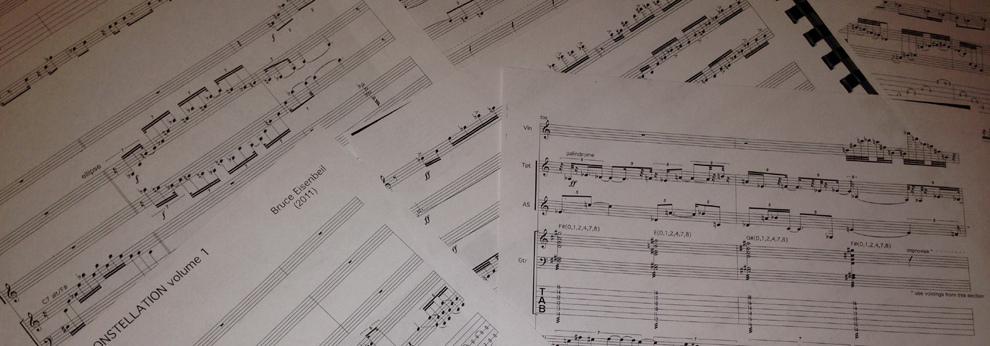

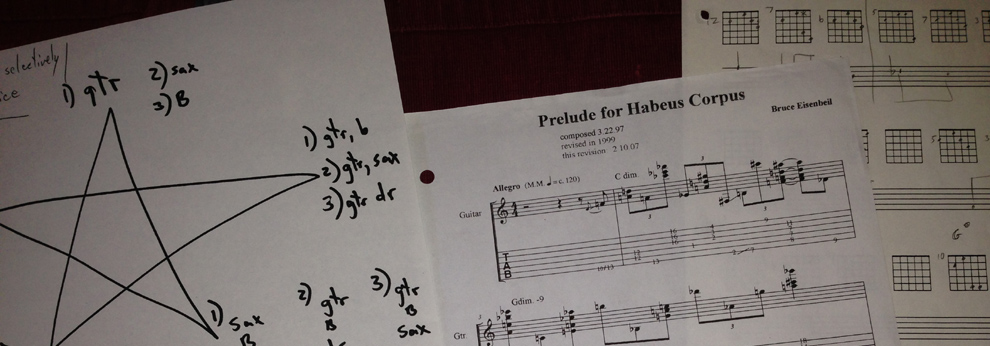
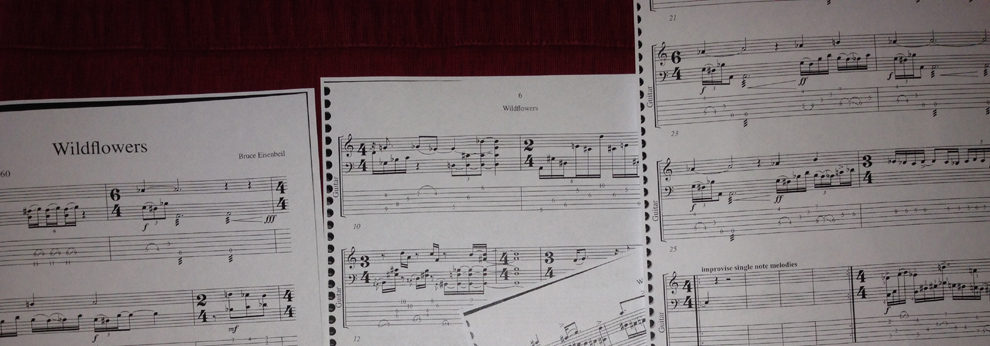








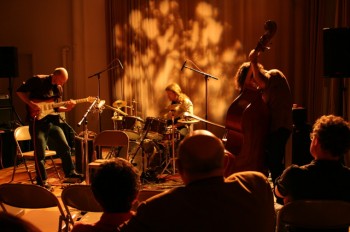
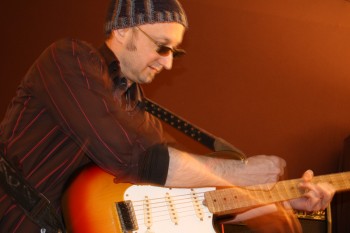
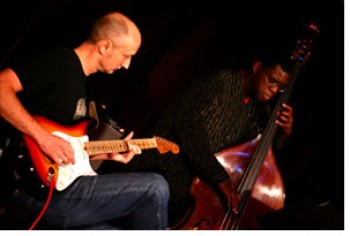
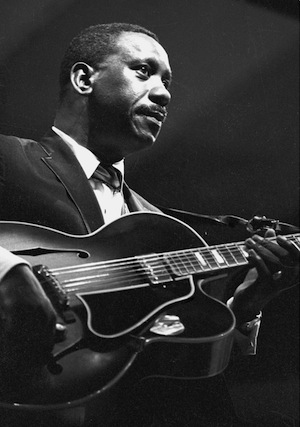
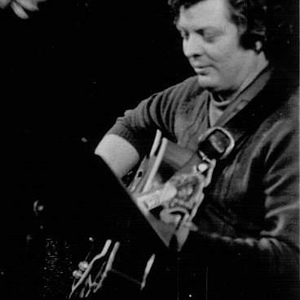
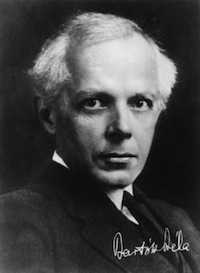
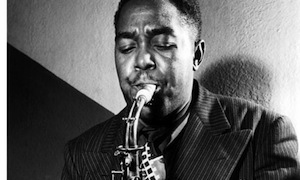
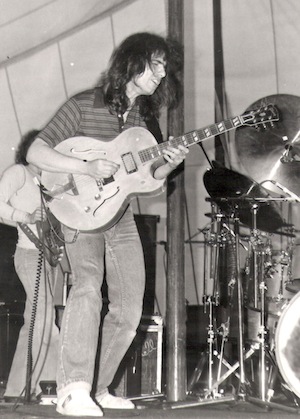

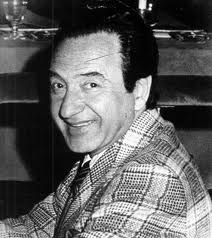
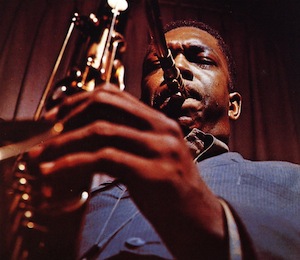
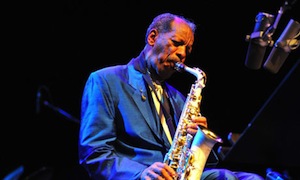
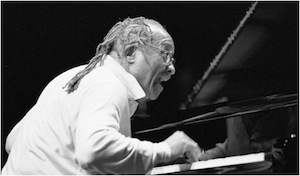
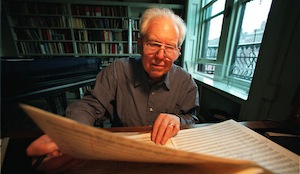

Social Profiles